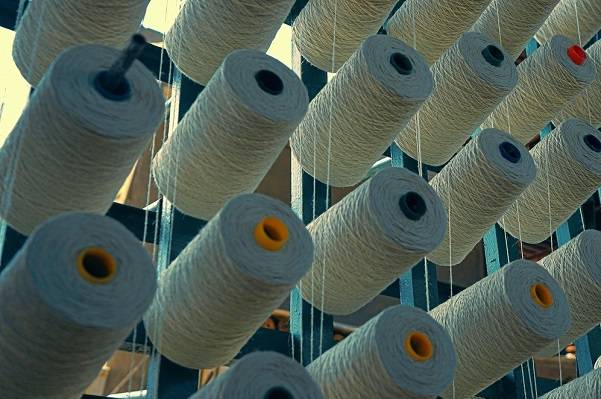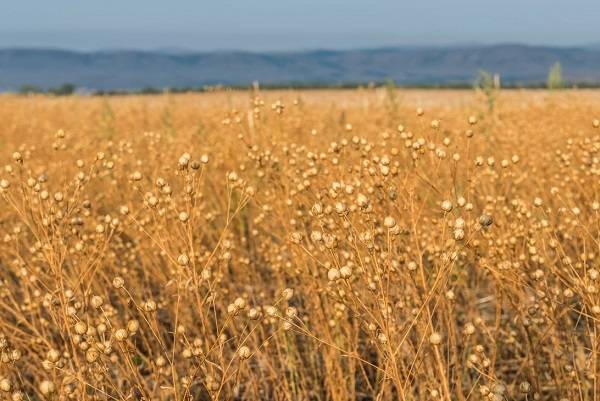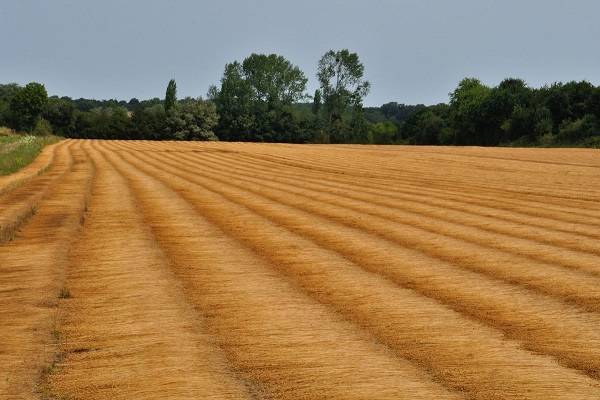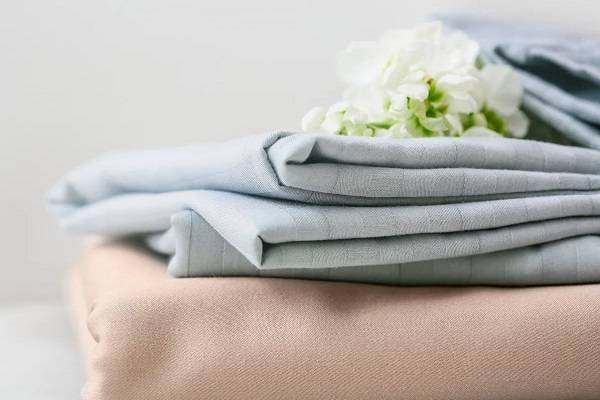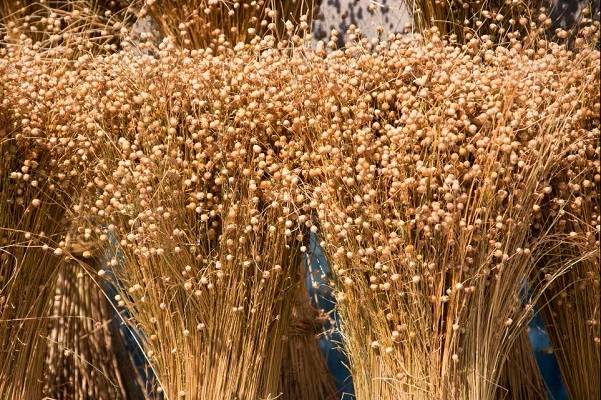Egyptian Linen: Timeless Elegance & Luxury of Premier Flax Fiber
A Closer Look At Amazing Qualities Of Egypt’s Linen & Why It Outshines The Rest

Innovation & Quality
Developing and supplying premium-quality, sustainably grown, consumer products
100% Natural
Organically Grown and Ethically Sourced
hemp and other natural fiber products
Shipping
We offer fast shipping
Your order out within 1-3 days
Wholesale
Visit our wholesale portal to register or login to your account
When it comes to fiber and textiles, there aren’t many materials that can evoke a sense of superior luxury and enhanced quality like linen coming from Egypt. Famous for its finest quality and outstanding properties, Egyptian linen has a rich heritage and history dating back to thousands of years ago. Egypt is known as the cradle of linen, with centuries of fiber craftsmanship and tradition of meticulous flax fiber manufacturing.
This article will reveal all its phenomenal features, from remarkable durability to incredible softness.
You will be able to discover how it compares to linen from other regions and why it is a perfect choice for eco-conscious consumers.
Table Of Contents:
Elevate Your Craft & DIY Projects With the Finest Egyptian Linen at Hemptique
Hemptique is a company that is committed to providing top-quality, sustainable supplies, such as first-class Egyptian linen. Egyptian flax fiber is a timeless material intended for individuals or businesses who are looking to use luxury items that are environmentally friendly. Our Egyptian flax twine and flax cord are multifaceted supplies of exceptional properties that can be used for a myriad of purposes, such as crafting garments, kitchen textile, fashion accessories, and pet toys. Since it is food-safe, it can also be used for meat preparation, cooking, and food presentation. The options are endless. Shop our linen collection and join us on a journey of supporting sustainability without compromising on style or quality. We ship internationally. To learn more about our products, contact us by phone at (760) 602-4864 ext. 403 and 405. Register for a wholesale account to enjoy discounted prices.
The Origins Of World’s Oldest Fiber
The finest Egyptian linen has an exceptionally long tradition that is deeply rooted in the ancient civilization of Mesopotamia. Its origins date back to around 5,000 BCE, making it one of the oldest fibers in the world. At the time, it was believed it symbolized purity, light, and the divine and was mostly used by the wealthy class in daily life or in burial rituals.
The unique climate of the fertile banks of the Nile River provided an ideal environment for flax plant cultivation that produced high-quality, strong fibers. The plants were harvested and processed by hand exclusively, which is a very labor-intensive technique. Due to an outstanding precision and meticulousness in fiber processing, Egyptian linen has become known for its remarkable softness, durability, and glossy sheen.
Linen artifacts found in archaeological excavation sites confirm the significance it had in ancient Egyptian culture. It was used in countless ways, from garments for the pharaohs and commoners to mummification shrouds. The ancient Egyptians believed that mummification in linen purifies the soul and guarantees a safe passage to the afterlife while protecting and preserving the body for eternity. Flax fiber clothing found in the Tomb of Tutankhamun are a testament to its fantastic longevity and durability. These artifacts also highlight intricate weaving techniques with high thread counts, comparable to some of the best fabrics manufactured today.
This photo is from our partner production factory in Egypt.
The Importance Of Climate
One of the major reasons why Egyptian flax fiber is of excellent quality is due to the climatic conditions of where the plant is grown and cultivated. Steady growth and fiber development are secured by consistent climate conditions without extreme temperature fluctuations and rich silt deposits by the annual Nile flooding. Being in the Delta of the Nile river, the ground is enriched with essential nutrients, creating a specially fertile soil. Furthermore, a climate of hot days and cool nights is ideal for growing long and strong fibers.
Flax Plant Cultivation: Traditional VS Modern Farming
Flax plant farming has its roots in ancient history, with cultivation methods that have been honed for thousands of years. Traditional cultivation starts with hand harvesting in order to preserve fiber’s quality. The next step is ‘retting’. It is a process of soaking the stalks in water to separate the fibers from the stems without damaging them. Egyptian manufacturers have perfected retting by utilizing the slow-moving Nile river water to accomplish natural luster and strength of the fiber.
In present-day world, even though some mechanization has been initiated to improve overall performance, many Egyptian manufacturers still continue to cultivate the plant traditionally, by hand. A combination of modern methods with traditional approach ensures the finest quality of Egyptian linen has not been compromised. Natural properties of flax fiber are preserved by employing a number of cultivation practices, such as strict selection of seed types, sustainable farming methods, minimal pesticide use, and water preservation.
Egyptian Linen Vs. European Linen: What’s The Difference?
Finding the ideal linen between the two means understanding the differences. From the comparison of major aspects below, you will discover which one suits your needs best.
Fiber quality
Egyptian Linen: Grown in almost ideal climate conditions, the fibers are long, strong, very durable and exceptionally soft.
The price
Egyptian Linen: Premium price reflects outstanding attributes like incredible softness, increased durability, and the meticulous labor-intensive manufacturing.
Manufacturing Process
Egyptian Linen: Egyptian linen is produced by fusing traditional with modern techniques to create the linen of natural luster, strength, and softness.
Pros and Cons
Egyptian Linen
Pros: Incomparable softness; top-grade durability; resistant to pilling; maintains color well.Cons: Premium price; limited accessibility.
European Linen
Pros: Eco-friendly manufacturing; fine quality; easily accessible.Cons: Might not be as soft as Egyptian fiber (climate conditions don’t allow for the fibers to reach their full length, thus, somewhat affecting the softness)
This photo is from our partner production factory in Egypt.
Egyptian Linen vs. Canadian Linen
Let’s take a look at major differences between Egyptian linen and Canadian linen to see how similar or different they are.
This photo is from our partner factory in Egypt.
Fiber Quality
Egyptian Linen: The warm, consistent climate of this geographical area allows for top-grade flax production that results in fiber of unmatched properties.
Canadian Linen: Since growing season is shorter, the fibers cannot grow long enough, which means that it is stiffer than its Egyptian equivalent.
Canadian Linen: Since growing season is shorter, the fibers cannot grow long enough, which means that it is stiffer than its Egyptian equivalent.
The price
Egyptian Linen: In general, due to high labor intensity and premium quality fiber, it is priced higher than its Canadian counterpart.
Manufacturing Process
Egyptian Linen: Preserves an ideal balance of hand-harvesting with modern technology to manufacture world-class merchandise.
Pros and Cons
Egyptian Linen
Pros: Remarkable look & feel; exceptional endurance; excellent color stability; good moisture absorption.
Canadian Linen
Pros: Lower price; locally manufactured for Canadian and US markets.
Cons: Lower quality fiber due to climate conditions and shorter growing season.
Pros: Remarkable look & feel; exceptional endurance; excellent color stability; good moisture absorption.
Cons: Higher cost; reduced availability.
Pros: Lower price; locally manufactured for Canadian and US markets.
Cons: Lower quality fiber due to climate conditions and shorter growing season.
Egyptian Linen Vs. Chinese Linen: Understanding The Contrasts
In the next section, we will outline the basic differences between Egyptian and Chinese linen. Read on to find out more about their major properties.
Fiber quality
Egyptian Linen: Fertile plains of the river Nile produce long and strong flax fibers with natural sheen and exceptional softness.
The price
Egyptian Linen: The higher price point is set by the sophisticated production and top-quality fibers.
Manufacturing Process
Egyptian Linen: During manufacturing, fiber’s caliber and excellence is prioritized over quantity.
Pros and Cons
Egyptian Linen
Pros: Extraordinary quality; matchless softness and durability; sustainable production practices.
Chinese Linen
Pros: More cost-effective; readily available.
Cons: May be of inconsistent quality; varied environmental practices.
Pros: Extraordinary quality; matchless softness and durability; sustainable production practices.
Cons: Higher price; limited availability.
Pros: More cost-effective; readily available.
Cons: May be of inconsistent quality; varied environmental practices.
This photo is from our partner factory in Egypt.
To summarize, although flax fiber from different geographical areas have their peculiar features, Egyptian linen still stands out for its first-class quality, which stems from centuries-old cultivation methods with focus on sustainability. If you are seeking best in softness, durability, and luxury, opt for Egyptian linen.
Discover The Benefits Of Egyptian Flax Fiber
Below are just some of many reasons why flax fiber products, like flax cord, flax twine, or flax fabric, are beneficial:
Preservation of the environment
When we look at the textile industry as a whole, linen from Egypt stands out as a material that contributes to a more sustainable production. By relying on ancient farming techniques that are in balance with nature, the need for additional irrigation and chemicals is substantially reduced. The delicate balance of the Nile river ecosystem is preserved and the final product appeals to eco-conscious buyers. On the other hand, production in other countries might depend more on extensive water use and chemical fertilizers.
Health and Wellness Benefits
Egyptian linen is a perfect fiber for anyone with sensitive skin or allergies. Its natural hypoallergenic properties are preserved through the manufacturing process, unlike fiber made in other areas, which may have undergone chemical treatments that could irritate skin or cause allergies. Egyptian linen is a breathable material that is typically loosely woven, which means that it is less likely to trap dust or allergens. In addition, its hollow fibers let the air flow freely through, thus promoting good ventilation. Another amazing feature is thermoregulation. It keeps you warm in cold weather and cold in the summer. For this reason, it is a great choice for bedding, clothing, kitchen textiles, or bath towels.
Longevity and Cost-Effectiveness
Purchasing Egyptian linen is a wise decision since it provides not only aesthetic appeal, but also long-term durability and cost efficiency. Famous for its unmatched resistance to regular wear and tear, it gets softer with each wash and wear, while maintaining its strength and appearance. Linen from other regions might start to break down faster or lose their luster sooner.
Fashion and Design Trends
In the world of fashion and home décor, linen is a preferred choice among many designers who are looking to work with sustainable materials of outstanding quality. Linen fabric adapts well to various styles due to its aesthetic versatility and is quickly becoming one of the most sought-after materials on the market, appealing especially to individuals who are looking to go greener.
Historical Significance and Cultural Heritage
Egyptian linen’s legacy is deeply woven into the history and cultural heritage of the country. This historical context where linen was related to the pharaohs and believed to be the gift of gods, enriches the value of Egyptian linen. Today, linen making has become a symbol of Egyptian pride. By being passed on from generations, it now has a unique story that enhances its appeal, unlike linens from other countries that might not have the same heritage.
Quality Certifications and Standards
Egyptian flax fiber adheres to strict quality certifications and standards, including certifications which verify manufacturing without harmful chemicals or fair trade practices. Knowing how to recognize authentic Egyptian linen will encourage you to make informed decisions, avoiding products that are not genuine.
- Global Organic Textile Standard (GOTS): This is one of the major standards for organic fiber processing, encompassing both ecological and social criteria. A GOTS certification guarantees that the fibers are organic, free from hazardous chemicals, and processed in an eco-conscious manner.
- OEKO-TEX® Standard 100: OEKO-TEX® is an independent certification system for raw textile materials, intermediate and end products. It tests for elements that are harmful to health or prohibited by law. This means that the product with this certification is free from more than 100 substances known to be harmful to human health.
- Fair Trade Certification: This type of certification supports better working conditions for workers through strict social, environmental, and economic standards. It ensures farmers and workers in linen production receive fair wages, work in safe conditions and protect the ecosystem.
- ISO 14001: ISO 14001 standard outlines the requirements for efficient environmental management system (EMS) that offers solutions for organizations to follow. ISO 14001 certification means minimized impact on the environment.
Final Thoughts
Even though Egyptian linen might seem like an extravagant choice at first sight, investing in such a material is a smart decision because its value outweighs the cost. Its amazing properties prove it is a wise investment, while it numerous other benefits justify premium prices. It is a remarkably tough fiber that gets even better with every use or wash. With quality that lasts, it proves itself as a true material that stands the test of time. Most importantly, linen is one of the most environmentally friendly fibers known to mankind today.


